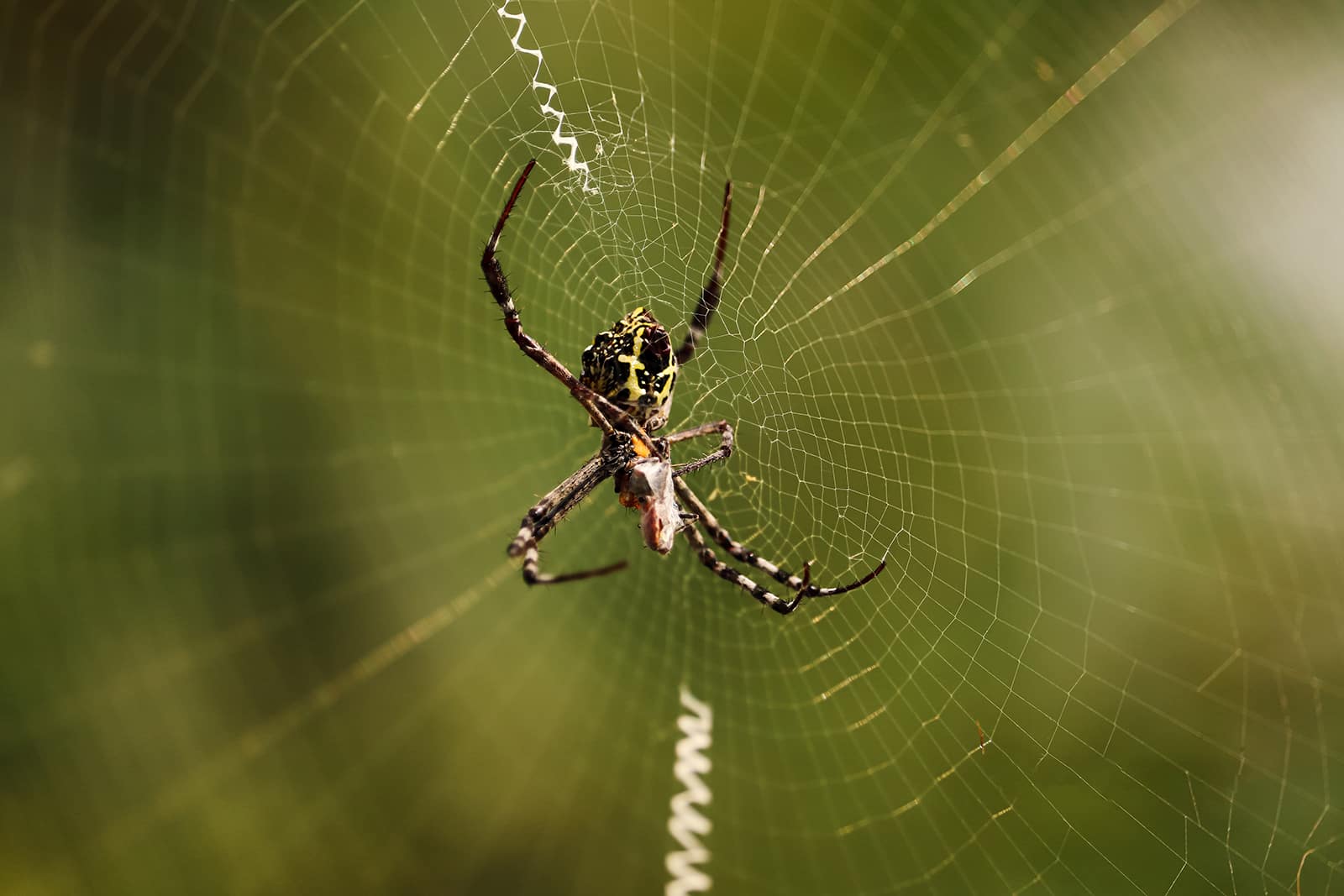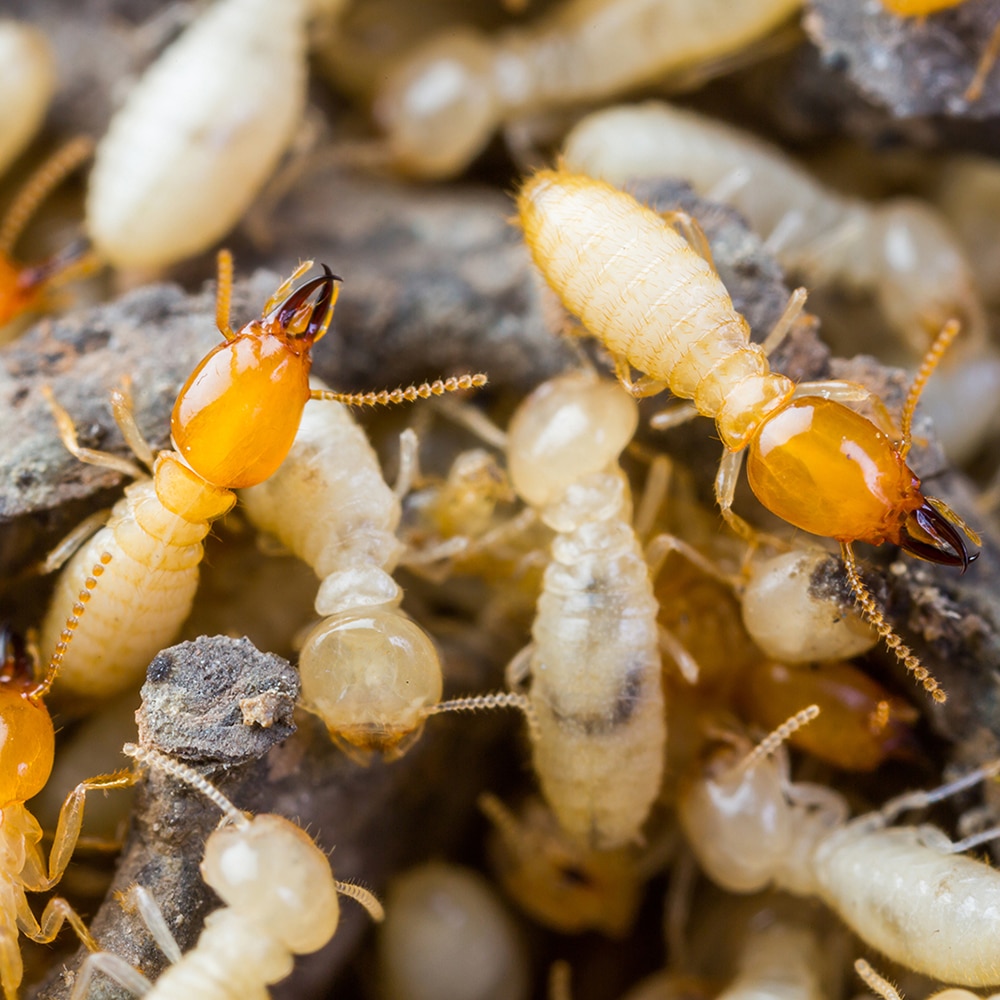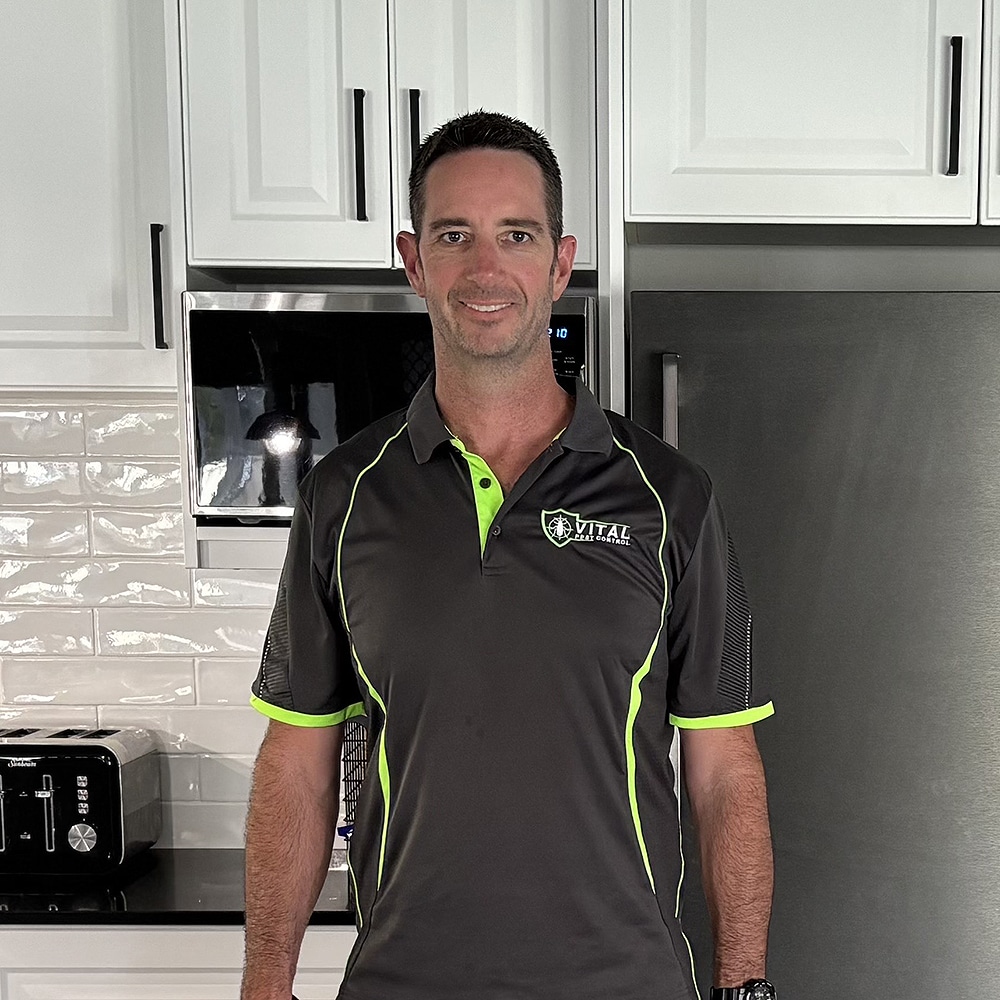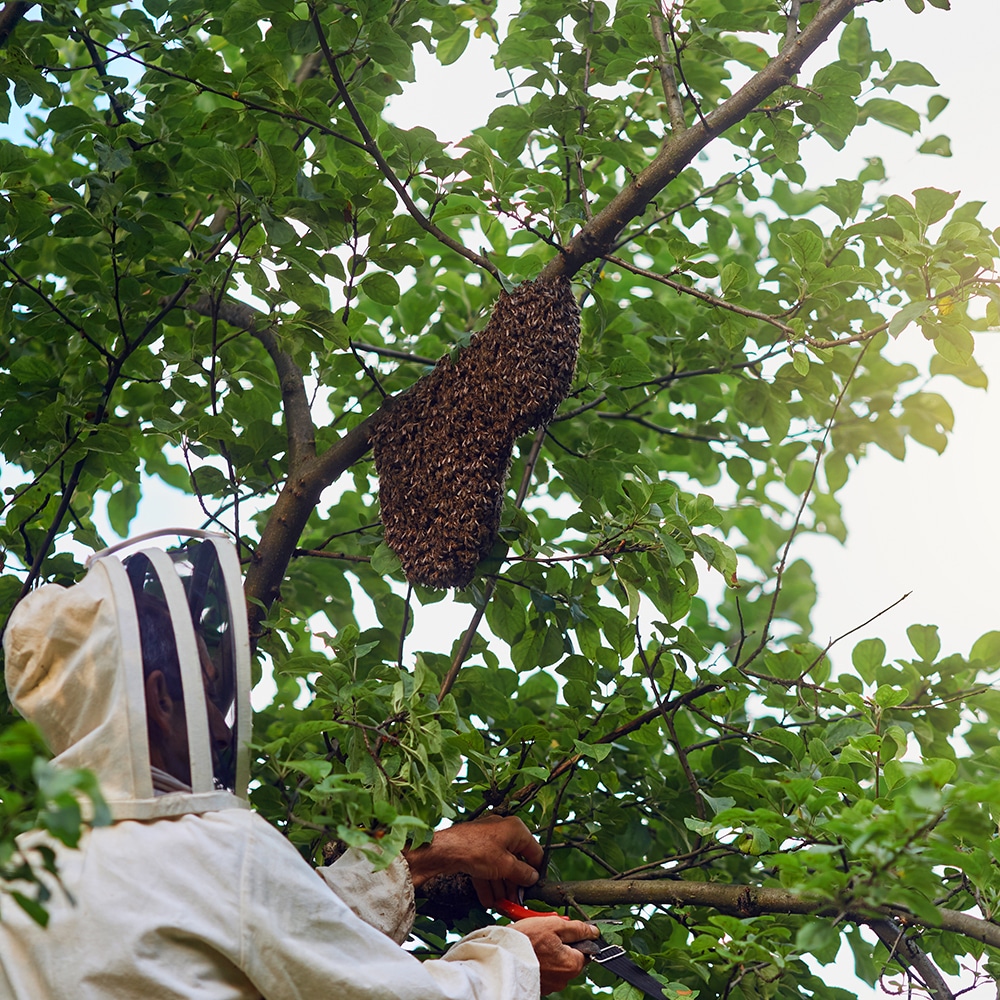
Why Do Spiders Come Back And Why
Why Do Spiders Come Back And Why On The Central Coast NSW. Responsive Proactive Solutions. Detail-focused for lasting results. Call Adam on 0431 222 894
When it comes to Baiting vs Termite Management System Systems What Works Best, homeowners in Central Coast NSW often feel overwhelmed. Choosing the right method is crucial for effective pest control. Let’s explore these options together, with insights from Vital Pest Control to help you make an informed choice.
Explaining Physical Termite Management System Options
Physical barriers are non-chemical solutions that deter termites. They include stainless steel mesh and sand barriers. These are installed during construction and provide a long-lasting solution. They’re reliable and trustworthy, blocking termites without chemicals.
Describing In Ground Bait Stations
In-ground bait stations lure termites with treated wood. Termites consume the bait and share it, killing the colony. This method targets termites directly and is easy to monitor. It’s a quality over quantity approach.
Which Method Is Safer for Kids
Bait stations are safer for kids, as they use minimal chemicals. Physical barriers also pose no chemical risk. These methods ensure peace of mind for families.
Pros and Cons of Chemical Termite Management Systems
Chemical systems are fast and responsive. They create a chemical barrier around your home. However, they require careful handling and can affect the environment. Consider the long-term impact before choosing this method.
Installing Reticulation Lines Effectively
Reticulation systems distribute chemicals evenly around your property. Installation needs precision to ensure coverage. This method requires regular maintenance for effectiveness.
Combining Multiple Treatments for Success
Using a combination of methods increases success rates. For example, combining bait stations with physical barriers offers comprehensive protection. This approach ensures thorough termite management.
Best Termite Management System Method
The best method depends on your needs. Consider environmental impact, safety, and effectiveness. For Central Coast NSW homes, a mix of baiting and physical barriers often works best.
Monitoring Bait Consumption Patterns
Regularly checking bait stations helps track termite activity. Monitoring ensures the system’s effectiveness and can indicate new infestations. Vital Pest Control offers expert monitoring services for peace of mind.
Ready to protect your home? Discover how we can help you today! Contact us at Contact.

Termites pose a significant threat to homes on the Central Coast NSW, making effective termite management systems crucial for homeowners. Various physical termite management options offer robust solutions to prevent infestations. Understanding these systems helps in making informed decisions for your property’s safety.
Barriers
Physical barriers are among the most common termite management systems. They involve materials like stainless steel mesh or polymer sheeting that act as an impenetrable fortress against termites. Installed during construction, these barriers fit around foundations and other vulnerable spots. This method prevents termites from entering buildings, providing long-term protection. Although installation requires precision and expertise, barriers offer peace of mind as a non-toxic solution.
Reticulation Systems
Reticulation systems use a network of underground pipes to distribute termiticides around a property’s perimeter. This system can be installed during or after construction. Regular refilling ensures ongoing protection, making it a flexible option. The system’s design allows for even distribution, ensuring comprehensive coverage. Homeowners benefit from a controlled, consistent defence against termites, making it a popular choice for both new builds and existing structures.
Physical Sheets
Physical sheets are another effective option, often used in conjunction with other methods. These sheets are robust and durable, placed beneath slabs or around foundations to block termite entry. They require no chemicals, appealing to those seeking environmentally friendly solutions. While initial installation may seem costly, their long-lasting nature and effectiveness offer excellent value over time. They serve as a steadfast guard, ensuring termites remain outside your home.
In-ground bait stations are a strategic tool for termite control, especially on the Central Coast of NSW. These systems are discreetly installed around a property, creating a protective barrier against termites. Vital Pest Control employs these stations to effectively intercept and eliminate termite colonies before they reach your home.
How In-Ground Bait Stations Work
In-ground bait stations work by luring termites with an attractive food source. Once termites start feeding on the bait, they carry it back to their colony. This bait contains a slow-acting insecticide that disrupts the termite’s growth, ultimately leading to the colony’s collapse. The process is gradual, ensuring the entire colony is affected over time.
Installation and Monitoring
Vital Pest Control expertly installs these stations at strategic points around your property. They are placed in areas with high termite activity, like near wood sources or damp soil. Regular monitoring by professionals ensures the bait remains effective and any termite activity is promptly addressed. This proactive approach keeps your property protected year-round.
Benefits of In-Ground Bait Stations
These stations offer an environmentally friendly termite solution. They use minimal chemicals, targeting only the termites. Additionally, in-ground bait stations are non-intrusive, maintaining the aesthetic of your garden or lawn. By using these systems, you benefit from a sustainable, long-term defence against termites.
When considering pest control options for your home on the Central Coast of NSW, especially with kids around, safety is a top concern. Choosing between baiting and termite management systems can be challenging. Each method has its own safety considerations that need to be evaluated for families with children.
Understanding Baiting Systems
Baiting systems are designed to attract termites using materials they find irresistible. These systems are typically placed away from common play areas, reducing direct exposure to children. The active ingredients in baits are often less toxic compared to other pest control methods, making them a safer choice for homes with kids. However, it’s essential to ensure that bait stations are regularly monitored and maintained by professionals to prevent accidental access by curious youngsters.
Exploring Termite Management Systems
Termite management systems involve creating a chemical barrier around the home, which can be more intrusive than baiting systems. While these systems can be effective in protecting your home, they may involve chemicals with higher toxicity levels. It’s crucial to use a professional pest control service that utilises child-friendly products and applies them safely. Ensuring that treatment areas are well-ventilated and inaccessible to children is important to maintain a safe environment.
Making the Safe Choice
Ultimately, both methods can be safe when implemented correctly. Consulting with pest control experts who are familiar with child safety can help you determine the best approach for your family. Regular inspections and preventive measures can offer peace of mind, ensuring your home stays safe from pests while protecting your children’s well-being.
Chemical termite management systems serve as a frontline defence against termites on the Central Coast, NSW. These systems use chemical barriers to protect properties, creating a shield that termites cannot penetrate. But like any method, they come with their own set of advantages and disadvantages.
Effective Protection
One of the main benefits of chemical termite management systems is their effectiveness. These treatments offer immediate protection, killing termites upon contact. This makes them a reliable choice for homeowners seeking swift and decisive action against termite infestations. The chemicals used are designed to be long-lasting, providing ongoing protection for several years.
Environmental Concerns
However, there are environmental considerations. The use of chemicals can raise concerns about their impact on the surrounding environment. While modern treatments are much safer than older methods, they still require careful handling and application by certified professionals to minimise risks to non-target organisms.
Cost and Maintenance
Cost is another factor to consider. Chemical systems can be expensive to install and may require regular maintenance to ensure continued effectiveness. Homeowners need to weigh the initial investment against the potential damage termites can cause if left unchecked. Regular inspections are crucial to maintain the integrity of the chemical barrier.
Installing reticulation lines for termite management is vital for effective pest control on the Central Coast, NSW. These lines distribute termite treatment evenly, making them a popular choice for homeowners and businesses looking to protect their properties. Understanding the installation process ensures optimal results and long-term protection against termites.
Choosing the Right Reticulation System
When selecting a reticulation system, consider the size and layout of your property. The system must fit the specific needs of your space. Consult with pest control professionals to determine the best option. They can assess factors such as soil type, property size, and termite activity to recommend an effective solution. A tailored approach ensures the system provides comprehensive protection.
Proper Installation Techniques
Effective installation requires precision. Reticulation lines should be placed around the perimeter of the building, ensuring all entry points are covered. This involves trenching around the foundation and placing lines at the correct depth. Professional installers have the expertise needed to handle the complexities of the process, ensuring no gaps in protection.
Regular Maintenance and Monitoring
Once installed, regular maintenance is crucial. Check lines periodically for blockages or damage. Refill the system with termiticide as needed to maintain effectiveness. Monitoring by pest control professionals helps catch issues early, ensuring the reticulation system continues to provide robust protection against termites.
On the Central Coast NSW, combining multiple treatments for pest control can lead to more effective results. While choosing between baiting and termite management systems might seem daunting, integrating various methods enhances success. Vital Pest Control leverages this strategy to tackle infestations more comprehensively.
The Power of Integrated Approaches
Using both baiting and physical barriers creates a formidable defence against pests. Baiting targets termites at their source, disrupting colonies, while barriers prevent entry. This dual strategy increases the likelihood of eliminating pests and protecting properties long-term. Vital Pest Control’s expertise ensures the most suitable combination for each unique situation.
Customised Treatment Plans
Every property on the Central Coast has distinct pest challenges. Tailored treatment plans take into account the specific environment, pest type, and infestation level. By assessing these factors, professionals design a comprehensive approach, utilising both baiting systems and termite management techniques to maximise effectiveness.
Long-Term Monitoring and Maintenance
Combining treatments doesn’t end with initial application. Ongoing monitoring and maintenance are crucial to success. Regular inspections help detect early signs of reinfestation, allowing for timely interventions. This proactive approach ensures that termite management systems and baiting remain effective, safeguarding homes and businesses.
When it comes to termite management systems on the Central Coast NSW, choosing the right method is crucial for effective pest control. Many homeowners face the dilemma of selecting between baiting systems and other termite management methods. Understanding the best approach for your situation can save time, money, and stress.
Understanding Termite Management Systems
Termite management systems are designed to protect properties from the destructive impact of termites. These systems either repel termites or kill them, preventing infestations. Using a comprehensive approach, these systems can include soil treatments, physical barriers, and monitoring stations. They address the problem by anticipating the termite path and intercepting it effectively.
Benefits of Termite Baiting Systems
Baiting systems offer a strategic way to lure and eliminate termites. They are placed around the property and contain substances that termites find irresistible. Once termites consume the bait, they take it back to the colony, spreading it further. This method targets the core of the infestation, potentially wiping out the entire colony. It’s an environmentally friendly choice, reducing the need for widespread chemical use.
Choosing the Right System for the Central Coast
On the Central Coast NSW, the choice between baiting and other termite management systems depends on factors like property size, termite species, and infestation severity. Consulting with a professional pest control service ensures the right system is selected for your unique situation. An expert can assess your property and recommend the most effective method to keep termites at bay.
Monitoring bait consumption patterns is crucial for effective pest control on the Central Coast, NSW. Understanding how termites interact with bait helps in assessing the effectiveness of a termite management system. It also aids in making informed decisions about when and where to place baits for optimal results.
Importance of Regular Monitoring
Regular monitoring ensures that bait stations are active and attracting termites. By tracking the bait consumption, pest control professionals can evaluate the level of termite activity. This information is vital in determining whether the current bait placement is effective or if adjustments are needed. Regular checks can prevent termite damage by catching infestations early.
Analysing Consumption Trends
Analysing consumption trends provides insights into termite behaviour. If termites consistently consume bait, it indicates strong activity in the area. Conversely, a drop in consumption might suggest a decline in termite presence or the need for relocating bait stations. Understanding these trends helps in crafting a strategic approach to pest management, ensuring the best protection for properties.
Adapting Strategies Based in Data
Data-driven decisions enhance the effectiveness of pest control strategies. By using consumption data, professionals can tailor baiting systems to specific environments. This customised approach increases the chances of eliminating termite colonies. Adapting strategies based on real-time data ensures that the pest control measures remain proactive and effective.
Ensuring effective pest control on the Central Coast involves understanding the importance of refill or reapplication times for baiting and termite management systems. Vital Pest Control offers solutions that require timely maintenance to keep your property safe from termites. Knowing when to refill or reapply these systems is crucial for their success.
Understanding Refill Times for Bait Systems
Bait systems need regular monitoring and refills to maintain their effectiveness. Typically, these systems should be checked every few months. The frequency can depend on the level of termite activity and environmental factors on the Central Coast. By ensuring bait stations are replenished as needed, you block termites from gaining a foothold in your home.
Scheduling Reapplications for Termite Management Systems
For termite management systems, reapplication might be necessary every few years. This timing ensures that the chemical barriers remain potent enough to deter termites. The humid climate on the Central Coast can affect the longevity of these treatments, so consulting with Vital Pest Control for tailored advice can help in maintaining system efficiency.
The Role of Professional Monitoring
Engaging professionals for regular monitoring ensures that both bait and termite management systems function optimally. Expert technicians can detect early signs of termite activity and adjust treatments accordingly. This proactive approach minimises the risk of infestations and protects your investment over the long term.
The environmental impact of pest control methods is a crucial consideration for homeowners on the Central Coast NSW. Choosing between baiting and termite management systems involves understanding how each approach affects the local ecosystem. Let’s explore these impacts to help you make an informed decision.
Baiting Systems
Baiting systems offer a targeted approach by attracting termites to a specific location. This reduces the need for widespread chemical use, making it a more environmentally friendly option. The bait contains slow-acting toxins that are less harmful to non-target species, minimising collateral damage. Additionally, baiting systems reduce chemical runoff into water sources, protecting local flora and fauna.
Termite Management Systems
Termite management systems, particularly chemical barriers, can have a broader environmental impact. These systems often involve applying chemicals around a property’s perimeter, potentially affecting soil health and nearby plant life. While effective at preventing termite entry, the chemicals used can leach into groundwater, posing risks to aquatic ecosystems. However, advancements in eco-friendly formulations are helping to mitigate these effects.
Ultimately, when considering the environmental impact of pest control on the Central Coast, it’s vital to weigh the benefits and drawbacks of each method. Baiting systems offer a more eco-conscious choice, whereas termite management systems provide robust protection but require careful consideration of their environmental footprint.
The AS 3660.2 standards are crucial for effective pest control, especially for termite management on the Central Coast of NSW. These standards provide guidelines to ensure the safety and efficacy of pest control methods. Understanding these standards can help homeowners make informed decisions when choosing between baiting and termite management systems.
Understanding AS 3660.2 Standards
The AS 3660.2 standards outline the best practices for termite management in buildings. These guidelines focus on both preventative measures and active treatments. By adhering to these standards, pest control professionals can ensure that their methods are not only effective but also compliant with safety regulations. This is particularly important in regions like the Central Coast, where termites can pose a significant threat to property integrity.
Application in the Central Coast
Given the unique environmental conditions of the Central Coast, the application of AS 3660.2 standards is vital. The area’s climate can lead to a higher risk of termite infestations. Following these guidelines ensures that pest control strategies are tailored to local conditions, increasing their effectiveness. Homeowners can feel confident that services adhering to these standards provide robust protection against pests.
Choosing the Right Pest Control Service
When selecting a pest control service on the Central Coast, it’s important to choose providers that follow AS 3660.2 standards. These standards ensure that methods used are both safe and effective. By prioritising services that adhere to these guidelines, homeowners can protect their properties from termites while also ensuring compliance with national safety regulations.
When considering pest control on the Central Coast NSW, understanding the differences between short-term and long-term benefits is crucial. Vital Pest Control offers various methods to protect your home from termites, but knowing what each approach entails helps in making informed decisions.
Immediate Protection with Short-Term Solutions
Short-term pest control solutions provide quick relief from termite infestations. These methods often involve chemical treatments that swiftly tackle existing problems. They are ideal for homeowners facing urgent issues. However, these treatments may require regular follow-ups, potentially leading to higher costs over time. While effective in the moment, they might not provide lasting protection against future infestations.
Lasting Safeguards with Long-Term Strategies
Long-term pest control strategies focus on prevention and sustained protection. These might include installing termite management systems that deter pests over extended periods. While the initial investment may be higher, these solutions often prove more cost-effective in the long run. By creating barriers and continuously monitoring for termite activity, they help maintain a pest-free environment with fewer interventions needed.
Choosing the Right Approach for Your Needs
Deciding between short-term and long-term solutions depends on your specific situation and budget. Short-term options are suitable for immediate concerns, while long-term strategies offer peace of mind and cost savings over time. Vital Pest Control can tailor a plan to meet your unique needs, ensuring effective termite management on the Central Coast NSW.
Living on the Central Coast of NSW offers a beautiful environment but also a unique set of challenges in pest control. Homeowners often make mistakes that can lead to ineffective pest management, especially when dealing with termites. Understanding how to avoid these missteps can save time, money, and stress.
Neglecting Regular Inspections
Many homeowners overlook the importance of regular termite inspections, thinking their property is secure. However, termites can be incredibly stealthy, causing significant damage before they’re detected. Scheduling routine inspections with a professional pest control service is crucial. These experts can spot early warning signs and recommend appropriate action, ensuring your home remains termite-free.
Improper Use of DIY Solutions
DIY solutions often seem like a quick fix for pest problems, but they can lead to bigger issues. Products available in stores may not target the specific species or nests effectively, often providing only a temporary reprieve. Engaging a qualified pest control professional ensures that the treatment is tailored to your home’s specific needs and pest challenges.
Ignoring Moisture Control
Termites thrive in damp environments, and ignoring moisture issues can invite infestations. Homeowners should ensure proper drainage around their property and fix leaks promptly. Installing ventilation in crawl spaces and using dehumidifiers can also help manage moisture levels, reducing the appeal of your home to these destructive pests.
By avoiding these common mistakes, Central Coast homeowners can maintain effective pest control strategies, protecting their investments and ensuring peace of mind.
Integrated pest management (IPM) is a sustainable approach to pest control that combines multiple strategies for effective results. On the Central Coast NSW, balancing cost and efficacy is crucial for Vital Pest Control. By focusing on long-term prevention and minimal environmental impact, IPM can offer a cost-effective solution.
Understanding Integrated Pest Management
IPM involves a combination of biological, cultural, physical, and chemical tools to manage pests. This approach reduces reliance on chemicals, minimising the risk to humans and the environment. By using a comprehensive plan, Vital Pest Control can tailor solutions that address specific pest issues while maintaining cost-effectiveness. This strategy helps ensure that pest control efforts are both efficient and sustainable over time.
Balancing Cost and Efficacy
Cost-effectiveness in pest management is about reducing expenses while maintaining effective control. IPM allows Vital Pest Control to implement targeted actions that reduce excess spending on unnecessary treatments. By prioritising prevention and monitoring, costs associated with large infestations and extensive damage are minimised. This balance between cost and efficacy ensures that resources are used wisely, leading to sustainable pest management outcomes.
Why Choose IPM on the Central Coast
The Central Coast’s diverse ecosystems require adaptable pest management strategies. IPM offers flexibility, allowing Vital Pest Control to adjust methods according to environmental changes and pest behaviour. This adaptability makes IPM an ideal choice for managing pests in this region. By considering local conditions and integrating various control methods, IPM supports effective pest management while respecting the unique characteristics of the Central Coast.
Living on the Central Coast, NSW, means dealing with a variety of pests that can invade your home. While some might attempt DIY pest control measures, there are times when calling professionals for vital pest control is crucial. Understanding when to reach out can save you time, money, and protect your property from significant damage.
Recurring Infestations
If pests keep returning despite your best efforts, it’s time to call in the experts. Professionals have access to treatments and techniques that are more effective than over-the-counter solutions. They can identify the root cause of the infestation and implement long-term strategies to prevent future occurrences.
Extensive Damage
When pests like termites cause structural damage, immediate professional intervention is necessary. Experts can assess the extent of the damage and provide appropriate solutions to repair and prevent further issues. Ignoring such situations can lead to costly repairs and compromises the safety of your home.
Health Concerns
Some pests pose serious health risks, such as cockroaches and rodents, which can spread diseases. If you notice signs of these pests, don’t hesitate to contact professionals who can safely and effectively eliminate them. Protecting your family’s health should always be a priority.
Please leave your details in the form and we will call you back the same day.
So that we can process your enquire efficiently please leave as many details as possible and upload any relevant images. (.jpg and .png format)

Why Do Spiders Come Back And Why On The Central Coast NSW. Responsive Proactive Solutions. Detail-focused for lasting results. Call Adam on 0431 222 894

Building a Long Term Residential Pest Protection Plan For Home Owners On The Central Coast NSW. Responsive Proactive Solutions. Detail-focused for lasting results. Call Adam on 0431 222 894

How to Protect Your Home from Wasp Infestations On The Central Coast NSW. Responsive Proactive Solutions. Detail-focused for lasting results. Call Adam on 0431 222 894